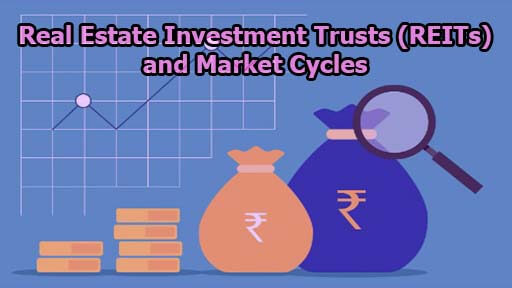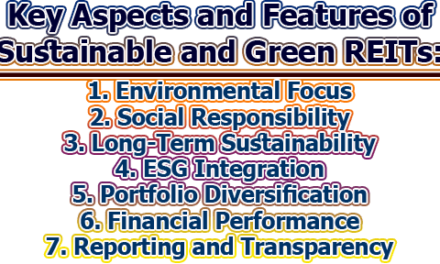Real Estate Investment Trusts (REITs) and Market Cycles:
Real Estate Investment Trusts (REITs) are investment vehicles that allow individuals to invest in real estate assets without directly owning properties. REITs have become increasingly popular due to their potential for steady income and portfolio diversification. However, like any investment, REITs are influenced by market cycles, and understanding their relationship is crucial for investors. In this article, we will explore how REITs are affected by market cycles and the factors that drive their performance.
Market Cycles:
Market cycles refer to the recurring patterns of economic expansion and contraction that impact various asset classes, including real estate. These cycles are driven by a multitude of factors, such as interest rates, economic indicators, investor sentiment, and supply and demand dynamics. Market cycles typically consist of four phases:
1. Expansion: During this phase, the economy is growing, and there is increased business activity, rising employment, and higher consumer spending. Real estate markets tend to thrive as demand for commercial and residential properties increases. Rental income and property values rise, benefiting REITs.
2. Peak: The peak phase marks the end of the expansion period. Economic growth slows down, and investor optimism reaches its peak. Real estate markets might experience high property prices, low vacancy rates, and strong rental growth. However, caution sets in as signs of an economic downturn emerge.
3. Contraction: In this phase, the economy experiences a decline. Business activity slows down, leading to job losses and reduced consumer spending. Real estate markets are negatively affected as property prices stagnate or decline, vacancy rates rise, and rental income may decrease. REITs may face challenges in maintaining cash flows and valuations.
4. Trough: The trough phase represents the bottom of the market cycle. The economy is in a state of recession, and real estate markets are significantly affected. Property prices may hit their lowest point, and there is high availability of distressed assets. However, this phase also presents opportunities for investors to acquire real estate at attractive prices, including through REITs.
REITs Performance during Market Cycles:
The performance of REITs is closely tied to the underlying real estate market and its corresponding market cycle. Different types of REITs may be affected differently, depending on their focus on specific property sectors (e.g., residential, commercial, industrial, and healthcare) or geographic regions. However, some general trends can be observed:
1. Expansion Phase: REITs typically perform well during the expansion phase. As the economy grows, demand for real estate increases, leading to higher occupancy rates, rental income, and property values. This favorable environment benefits REIT investors with growing dividends and potential capital appreciation.
2. Peak Phase: During the peak phase, the performance of REITs becomes more uncertain. While some sectors, such as prime commercial properties, may continue to perform well, there is an increased risk of a market correction. Investors may become cautious, leading to a slowdown in real estate transactions and potential downward pressure on REIT prices.
3. Contraction Phase: REITs face challenges during the contraction phase as economic activity declines. Occupancy rates may decrease, rental growth can stall or turn negative, and property values may decline. As a result, REITs may struggle to generate consistent income and experience a decline in share prices.
4. Trough Phase: The trough phase can present opportunities for REIT investors. Distressed properties become available at lower prices, and rental markets may stabilize as the economy starts to recover. Investors with a long-term perspective can benefit from acquiring REITs or increasing their holdings during this phase, positioning themselves for potential future growth.
Factors Influencing REITs Performance:
Several factors influence the performance of REITs during market cycles:
- Interest Rates: REITs are sensitive to changes in interest rates. When interest rates are low, borrowing costs decrease, making it easier for REITs to finance acquisitions and development projects. This can lead to increased property purchases and rental income, benefiting REIT performance. Conversely, when interest rates rise, borrowing costs increase, potentially impacting REITs’ profitability and valuation.
- Supply and Demand Dynamics: The balance between supply and demand in the real estate market plays a significant role in REIT performance. During periods of economic expansion, demand for real estate typically outpaces supply, leading to rising property values and rental rates. This benefit REITs as they experience higher occupancy rates and rental income. Conversely, during economic contractions, oversupply can lead to higher vacancy rates and downward pressure on rental income.
- Property Sector Performance: Different property sectors perform differently throughout market cycles. For example, during an economic expansion, commercial and industrial properties tend to thrive due to increased business activity and demand for office and warehouse space. On the other hand, during economic contractions, sectors like retail may face challenges due to reduced consumer spending. Understanding the performance dynamics of specific property sectors is essential for assessing the potential impact on REITs.
- Geographic Considerations: REITs with diversified portfolios across different geographic regions can mitigate risks associated with localized economic downturns. Economic conditions can vary between regions, with some areas experiencing stronger growth while others face challenges. By diversifying across regions, REITs can offset the negative impacts of a downturn in one specific area with positive performance in another.
- Management Quality: The quality of REITs management teams can significantly impact performance during market cycles. Experienced and skilled management teams are adept at navigating challenging economic conditions, implementing effective leasing strategies, and optimizing property portfolios. Investors should assess the track record and expertise of REIT management teams when evaluating their potential performance during different market phases.
- Investor Sentiment: Investor sentiment and market psychology play a role in the performance of REITs. During periods of optimism, investors may be willing to pay higher premiums for REITs shares, driving prices up. Conversely, during market downturns, fear and uncertainty can lead to a sell-off, resulting in declining REIT prices. Investor sentiment can amplify the effects of market cycles on REITs’ performance.
- Capital Markets and Financing Availability: REITs rely on access to capital markets for financing their operations, acquisitions, and development projects. During periods of economic expansion, capital markets tend to be more favorable, with easier access to debt and equity financing. This enables REITs to fund growth initiatives and capitalize on market opportunities. In contrast, during economic contractions, capital markets can tighten, making it more challenging for REITs to secure financing, potentially limiting their growth prospects.
- Lease Structures and Rent Escalation: The structure of lease agreements within the real estate market can impact REITs’ performance during market cycles. Long-term leases with built-in rent escalations provide stability and predictability of rental income for REITs, which can help mitigate the negative impact of economic downturns. In contrast, short-term leases or leases with variable rental rates expose REITs to fluctuations in market conditions, making them more vulnerable to economic downturns.
- Inflation and Real Estate as an Inflation Hedge: Inflationary environments can have both positive and negative effects on REITs. On one hand, as inflation rises, property values and rental rates may increase, leading to potential capital appreciation and higher rental income for REITs. Real estate assets are often considered a hedge against inflation since rental income tends to increase with inflation. However, inflation can also lead to higher borrowing costs and interest rates, which can impact REITs’ profitability and valuations.
- Government Policies and Regulations: Government policies and regulations related to real estate and taxation can influence the performance of REITs during market cycles. For example, during economic expansions, governments may introduce measures to cool down overheated real estates markets, such as stricter lending standards or higher property taxes. These policies can impact property values and rental growth, which, in turn, affect REITs’ performance. Additionally, changes in tax laws and regulations can impact the tax treatment of REITs and their attractiveness to investors.
- Market Liquidity and Investor Behavior: Market liquidity, or the ease with which assets can be bought or sold without causing significant price movements, can impact REITs’ performance during market cycles. In times of market volatility or economic uncertainty, liquidity can dry up, leading to wider bid-ask spreads and potentially making it more difficult for investors to enter or exit REIT positions. Illiquidity can exacerbate price movements, causing increased volatility in REITs’ valuations.
- Long-Term Investment Horizon: When evaluating REIT performance during market cycles, it is important to consider the long-term investment horizon. Real estate is a long-term asset class, and short-term fluctuations in market cycles may not necessarily dictate the long-term prospects of well-managed REITs. Investors with a longer investment horizon can potentially benefit from holding REITs through multiple market cycles, capitalizing on income generation, potential appreciation, and reinvestment of dividends over time.
From the above discussion, we can say that understanding the relationship between REITs and market cycles is crucial for investors to make informed investment decisions. By assessing the prevailing market conditions, property sector dynamics, interest rate environment, and other relevant factors, investors can position themselves to take advantage of potential opportunities and manage risks associated with REIT investments across different phases of the market cycle.

Assistant Teacher at Zinzira Pir Mohammad Pilot School and College










